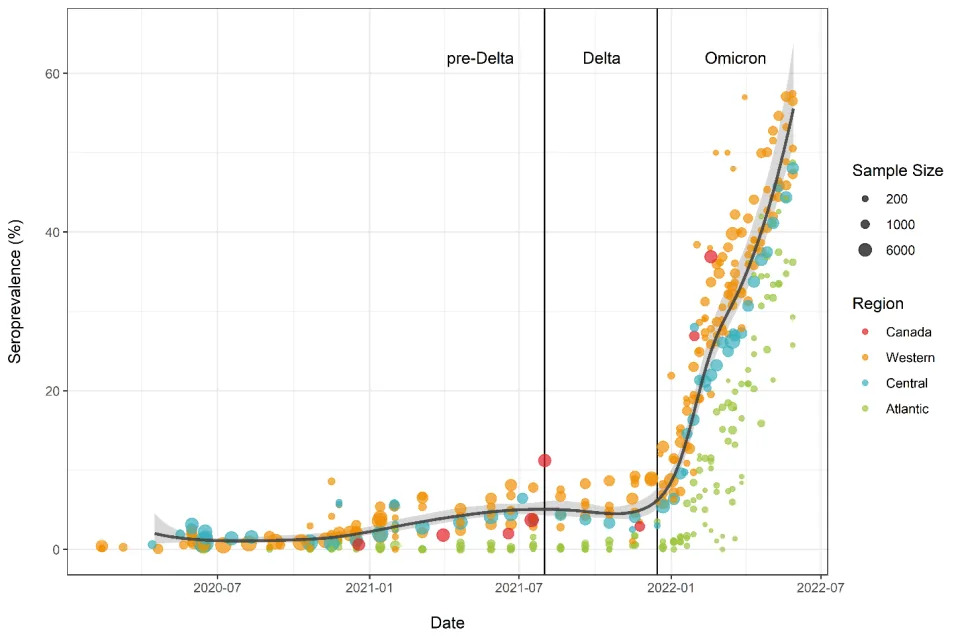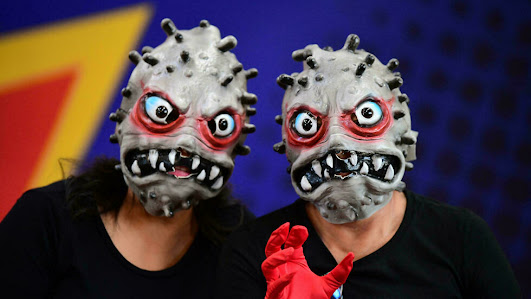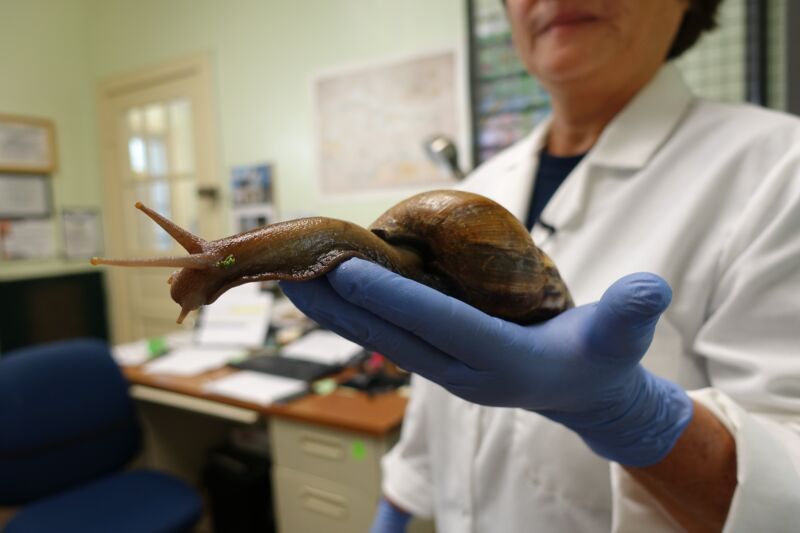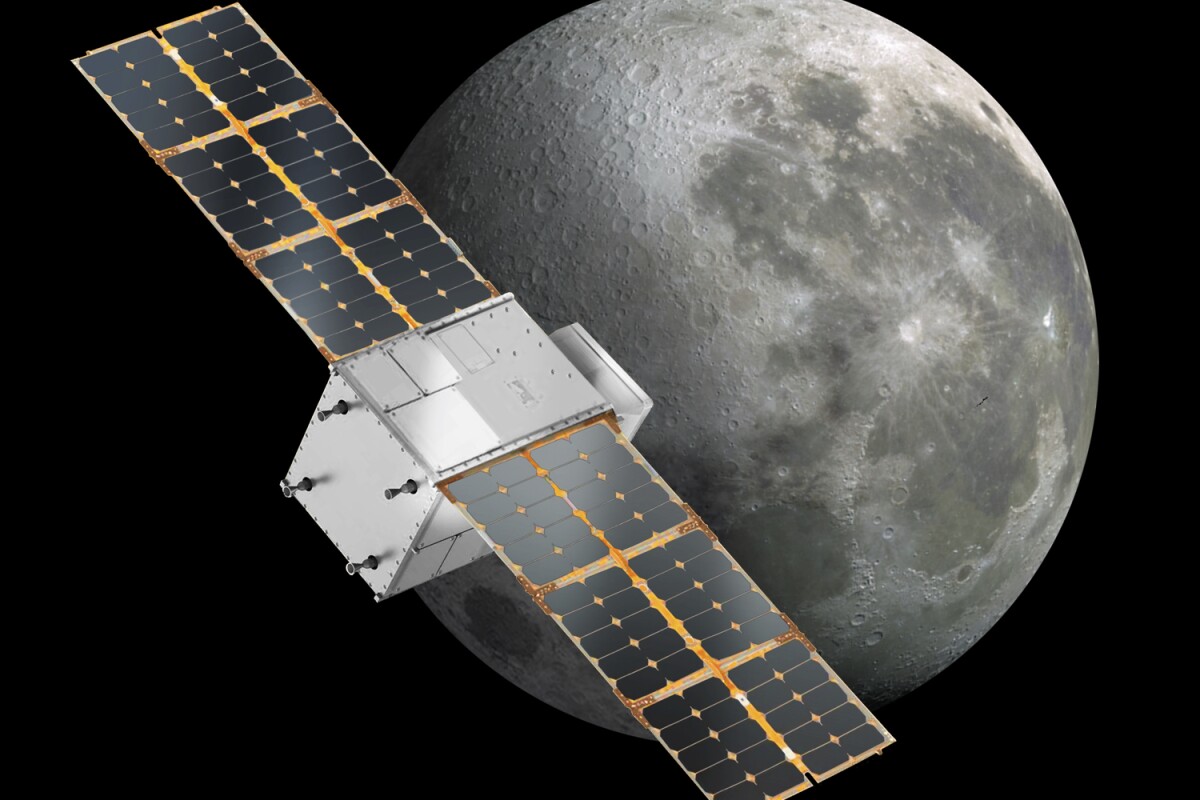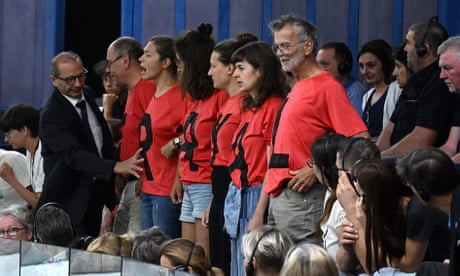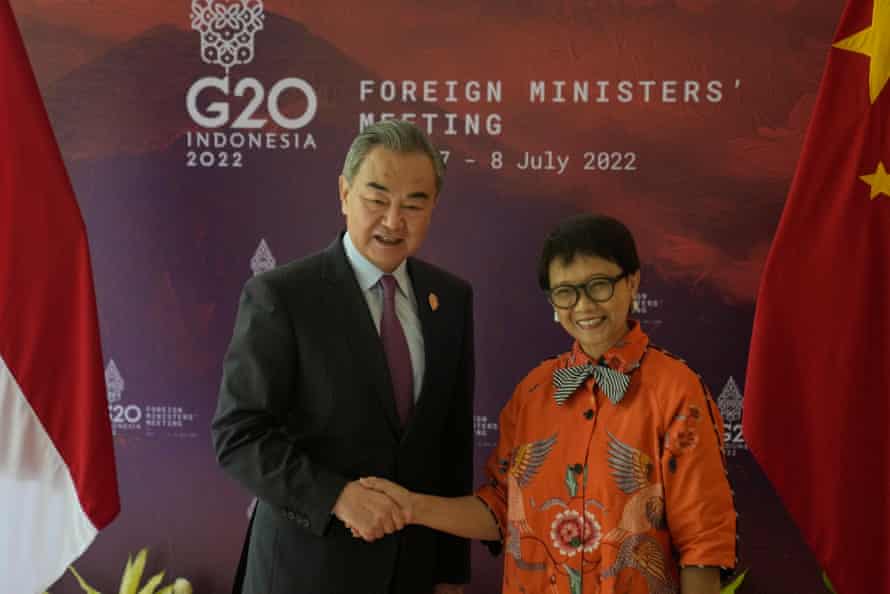The Omicron tsunami: Analysis of data from blood testing suggests over 17 million Canadians were infected with Omicron in only 5 monthsCOVID-19 Immunity Task Force

Figure 1.
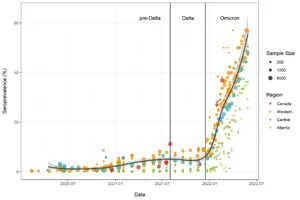
Figure 2.
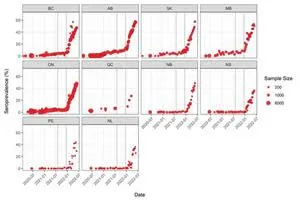
Figure 3.
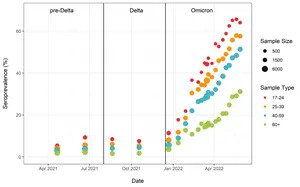
MONTREAL, July 06, 2022 (GLOBE NEWSWIRE) -- An analysis of data from 21 studies, funded by the Government of Canada through its COVID-19 Immunity Task Force (CITF) and that relied on blood testing, provides a clearer picture of the massive scale of the Omicron wave in Canada. Before the arrival of the Omicron variant, approximately 7% of Canadians had infection-acquired antibodies to SARS-CoV-2, the virus that causes COVID-19. Between December 2021 and May 2022, the proportion rose by 45% of Canadians having antibodies to SARS-CoV-2 infection (see Figure 1 below). A fuller account of the analysis can be found online here.
“Omicron has been a tsunami,” states CITF Executive Director Dr. Tim Evans. “Across the country, our analysis of the data suggests that 17 million Canadians had an Omicron infection in the period December to May, for an average of more than 100,000 infections per day. New sublineages in the Omicron line have been continuing to spread since then, and the percentage of Canadians who have had a SARS-CoV-2 infection is now likely well above 50%.”
All provinces affected
The number of people with signs of a previous infection in their blood (infection-acquired seroprevalence) has increased steeply during the Omicron wave in every province (Figure 2). By the end of May, the proportion of people with evidence of previous infection was 50-60% in the Western and Central provinces. Although Atlantic Canada retained the lowest seropositivity due to infection, it had the largest relative increase in seroprevalence and reached over 35%.
Omicron affected all ages — but the younger and less vaccinated populations most!
Analysis of blood donations made to Canadian Blood Services (which provides the CITF an update every two weeks) showed that the highest levels of seropositivity due to infection were in young adults, with about 65% having antibodies by the last week of May. Rates of seropositivity due to infection decreased with increasing age: 25-39 (57%), 40-59 (51%), and 60+ (31%) (Figure 3).
“Through sheer numbers of infections, the Omicron variant exacted a substantial toll in services and lives disrupted, as well as hospitalizations and deaths. It clearly did not spare healthy young Canadians,” says CITF Co-Chair Dr. Catherine Hankins. “As well, we’re still learning about who gets a post COVID-19 condition or long COVID, why, and the repercussions. This summer may be free of public health restrictions, but Omicron is still spreading so masking and distancing are smart in risky settings. To minimize further disruptions to our lives, Canada has to track the situation closely as it evolves. We all need to respond in a timely way as this virus does not have a seasonal pattern, like the other respiratory viruses we expect when everyone heads back to work or school in the autumn.”
“Millions of Canadians now have hybrid immunity from a combination of COVID-19 vaccines and an infection. Unfortunately, emerging evidence suggests that most of these individuals remain at risk of re-infection with viruses in the Omicron lineage,” explains CITF Co-Chair Dr. David Naylor. He adds “Newer vaccines may improve coverage against infection. However, we still have millions of adults who haven’t had a third shot and should get one to consolidate their protection against serious disease. More generally, all Canadians should stay alert for the latest public health guidance on COVID-19 vaccines and make sure their coverage is up to date for the fall season.”
About the COVID-19 Immunity Task Force
The Government of Canada established the COVID-19 Immunity Task Force (CITF) in late April 2020 to catalyze, support, and harmonize research on SARS-CoV-2 immunity for federal, provincial, and territorial decision-makers in their efforts to protect Canadians and minimize the impact of the COVID-19. The Task Force and its Secretariat work closely with a range of partners, including governments, public health agencies, institutions, health organizations, research teams, and other task forces, engaging communities and stakeholders. To date, the CITF has supported over 100 studies across Canada that are generating insights on the levels, trends, nature, and duration of immunity arising from SARS-CoV-2 infection and COVID-19 vaccination. The CITF is overseen by an Executive Committee of volunteers that includes leading scientists and policymakers from across Canada.
Media contact
Rebecca Burns
media@covid19immunitytaskforce.ca
Cell: +1.438.871.8763
Figure 1. Anti-nucleocapsid seroprevalence (infection-acquired seropositivity) for all Canadian provinces for all age groups, combined
Figure 2. Anti-nucleocapsid seroprevalence (infection-acquired seropositivity) estimates by province
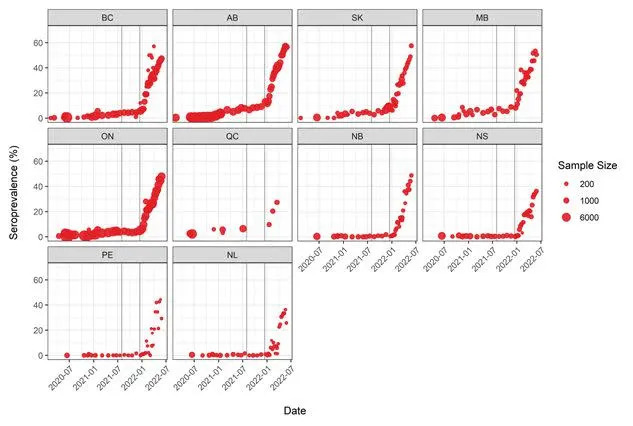
Figure 3. Anti-nucleocapsid seroprevalence (infection-acquired seropositivity) estimates by median age
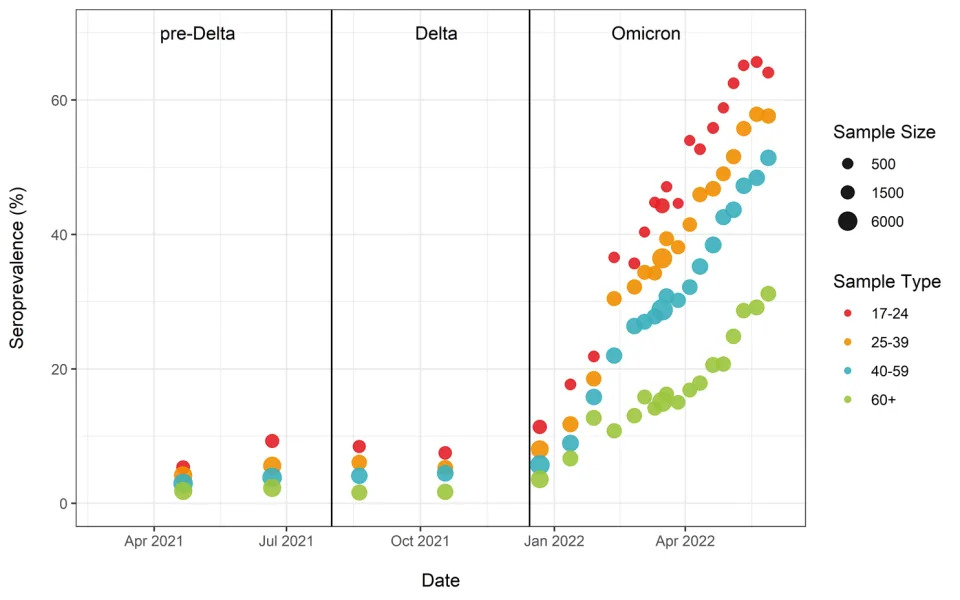
The views expressed herein do not necessarily represent the views of the Public Health Agency of Canada.
Graphics accompanying this announcement are available at
https://www.globenewswire.com/NewsRoom/AttachmentNg/05d26673-aef7-4abe-b9bc-ee0f2323c3a0
https://www.globenewswire.com/NewsRoom/AttachmentNg/f6133b43-7c1b-4c20-8981-4ddeb45f9b62
https://www.globenewswire.com/NewsRoom/AttachmentNg/59b4bf01-6c9f-4df9-bad6-32e2088d3dae
The Many Faces Of Omicron
William A. Haseltine
Jul 6, 2022,
This is part of a continuing series describing antiviral antibodies to prevent and treat SARS-CoV-2 infections. In this series, we will discuss the fundamental nature of virus evolution, how SARS-CoV-2 has mutated to evade neutralizing antibodies, and our latest attempts to fight against these mutations with more recent and improved antibody candidates.
The latest versions of Omicron leading the charge of recent new cases are BA.4, BA.5, and BA.2.75. Since its discovery in late 2021, dozens of variants of the original Omicron strain have caused hundreds of millions of infections. Every strain carries a slightly different genetic sequence due to mutations developed over time. These mutations are sometimes inconsequential but often impact major viral characteristics including infectivity and immune evasion.
Omicron BA.1 contains 30 mutations in the Spike protein alone. Later versions of Omicron expand on this vast array. These mutations were a significant factor in Omicron’s rapid rise this past winter, infecting roughly one million people in the United States daily at its peak. These mutations increase the transmission of the virus in the population, whether vaccinated or not, by more than tenfold as compared to the original Wuhan strain.
It is worth noting that Omicron has a number of mutations outside the Spike protein as well. These impact viral characteristics including replication efficiency, pathogenesis, and virulence. There are 19 mutations in proteins other than the Spike throughout the genome, including Orf1a, Orf1b, E, M, Orf8, and N.
On top of its infectivity is Omicron’s immune evasion of natural immunity, vaccine-induced immunity, and monoclonal antibody immunity, notably for this discussion. Monoclonal antibodies target specific structures, often in the Spike protein. For the first year of the pandemic, scientists made antibodies for the original Wuhan version of SARS-CoV-2. However, with every Spike mutation, the structure of Spike slightly changes.
Think of a key in a lock. They made a key for the lock, but the lock changed shape in the meantime. Then the scientists created a new key for the new lock, but the lock was constantly shifting, and the cat-and-mouse game continued.
An early study on the neutralization of Omicron BA.1 by various approved and in-progress monoclonal antibodies found that 26 of 29 lost some or all neutralizing potency against the new strain. Later Omicron subvariants likely have increased immune escape and may reduce the potency of these antibodies even further.
Neutralizing efficiency only seems to be growing worse as Omicron evolves into more mutated strains such as the latest BA.4 and BA.5. These later variants are more heavily mutated in the receptor-binding domain than BA.1, meaning antibodies that target the receptor-binding domain will have a tougher time binding and neutralizing the new variants.
The continued mutation of Omicron is also leading to lower vaccine potency against later strains. For instance, three doses of Pfizer vaccination is almost 3x less effective against BA.4 or BA.5 than it is against BA.1, BA.2, or BA.3.
All is not lost. Among those that can neutralize Omicron was 35B5, a potent, broadly-neutralizing monoclonal antibody effective against all known variants. Rather than making a new key for the lock, 35B5 essentially blows the lock off the door. This antibody targets specific amino acids in the N-terminal domain of the Spike that are regularly unmutated. This indicates that the unmutated structure at those positions is critical for virus function, such as N165 and N234, which act together as a molecular switch for the Spike’s changing up and down conformations.
By targeting unmutated positions in not only Omicron but all variants, 35B5 breaks the lock off the door, future-proofing against more heavily mutated variants that may come our way in the coming months or years. In our opinion, all monoclonal antibodies should pursue the broad-neutralization strategy. Three more recently unveiled antibodies have shown promise in early in vitro testing.
The first two, Cv2.1169 and Cv2.3194, were isolated by researchers at the Pasteur Institute in recent months. Both antibodies are notable because they cross neutralize both BA.1 and BA.2, indicating a wide net of neutralization. Cv2.1169, specifically, demonstrated therapeutic efficacy in animal models as well.
The third, SP1-77, was recently detailed by a team of researchers at the Harvard Medical School and Duke University Medical School. This antibody also cross-neutralizes BA.1 and BA.2, as well as all other variants of concern. The unique antibody was generated via humanized mouse model and blocks membrane fusion rather than RBD-binding. The more weapons in our arsenal, the better.
We will also describe the latest in the Omicron family: BA.2.75. You may find descriptions for other notable Omicron family members, such as BA.4, BA.5, and BA.2.12.1 in previous articles.
I am a scientist, businessman, author, and philanthropist. For nearly two decades, I was a professor at Harvard Medical School and Harvard School of Public Health where I founded two academic research departments, the Division of Biochemical Pharmacology and the Division of Human Retrovirology. I am perhaps most well known for my work on cancer, HIV/AIDS, genomics and, today, on COVID-19. My autobiography, My Lifelong Fight Against Disease, publishes this October. I am chair and president of ACCESS Health International, a nonprofit organization I founded that fosters innovative solutions to the greatest health challenges of our day. Each of my articles at Forbes.com will focus on a specific healthcare challenge and offer best practices and innovative solutions to overcome those challenges for the benefit of all.
